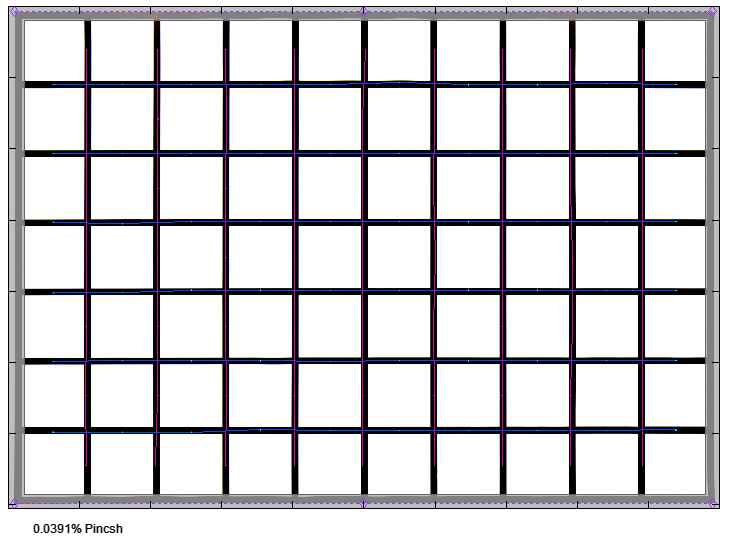|
Canon EF 16-35mm f/4 USM L IS - Review / Lens Test Report - Analysis |
|
Lens Reviews -
Canon EOS (Full Format)
|
|
Page 2 of 3

Distortion
Ultra-wide zoom lenses tend to suffer from rather hefty image distortion and that's also true for the EF 16-35mm f/4 USM L IS. At 16mm it produces a strong degree of barrel distortion (3.4%) which eases the further you zoom towards the long end. At 20mm the situation is already improved (1.6%) and there's only a minor bit left at 24mm (a bit wavy though) before changing to moderate pincushion distortion at 35mm (1.6%). This is roughly in line to what we have seen from Canon and others so far.
|
Move the mouse cursor over the focal length text marks below to observe the respective distortion
|
| 16mm |
20mm |
24mm |
35mm |
|

|
Vignetting
The amount of vignetting is very high (2.1EV) at 16mm @ f/4 although this isn't any worse than on the old EF 17-40mm f/4 USM L. Stopping down to f/5.6 improves the issue significantly and at f/8 it is pretty acceptable within the difficult full format scope. The light falloff remains visible at longer focal lengths & wide-open aperture but most of the corner shading is acceptable by f/5.6 already.

MTF (resolution)
The resolution characteristic varies a bit across the zoom range but it's generally on a very high level for such a lens. The center performance is very good to excellent at all tested focal lengths and aperture settings. The EF 16-35mm f/4 USM L IS has its sweet spot in the more interesting lower portion of the zoom range. The borders are very good here and even the corner quality reaches good to very good figures. This is certainly an improvement compared to what we have seen from Canon so far here. There is, however, a decrease in quality at 35mm. The center quality is still there but the border/corner quality is just good to very good. There's also a bit of field curvature at 35mm but it's not really dramatic.
The centering quality of the tested sample was good.
Please note that the MTF results are not directly comparable across the different systems!
Below is a simplified summary of the formal findings. The chart shows line widths per picture height (LW/PH) which can be taken as a measure for sharpness.
If you want to know more about the MTF50 figures you may check out the corresponding Imatest Explanations
Chromatic Aberrations (CAs)
Lateral chromatic aberrations (color shadows at harsh contrast transitions) are unusually well controlled for such a lens. Even the peak (@ 16mm) stays below 1px on the average at the image borders.

Bokeh
We don't formally test the quality of the bokeh on ultra-wide lenses. However, for an ultra-wide lens it is comparatively good although it doesn't quite reach the quality of a decent tele lens. Below is an example of a really difficult scene with harsh contrasts. Most lenses will struggle here but we have really seen worse results from other ultra-wide lenses.

|